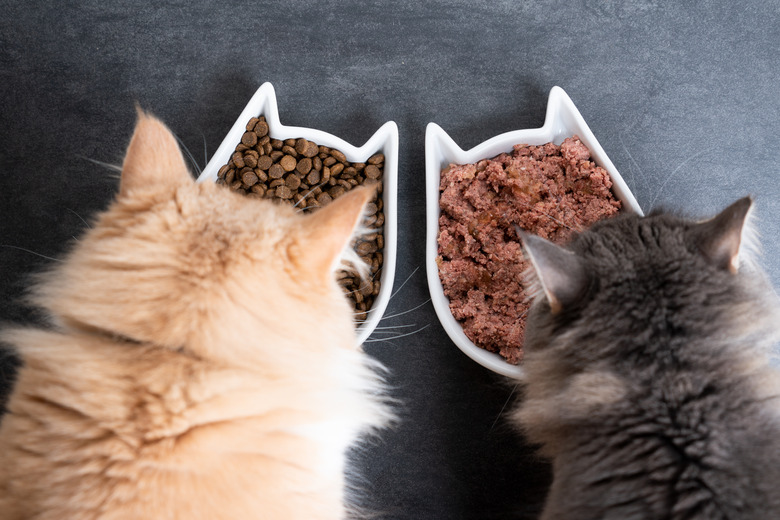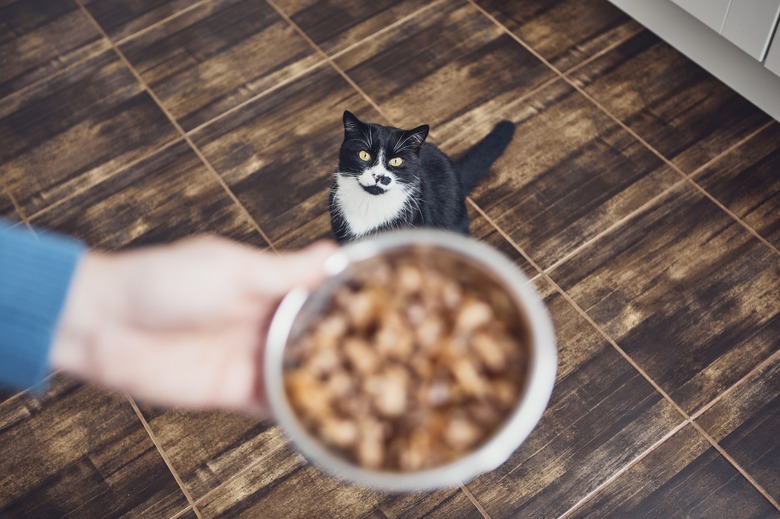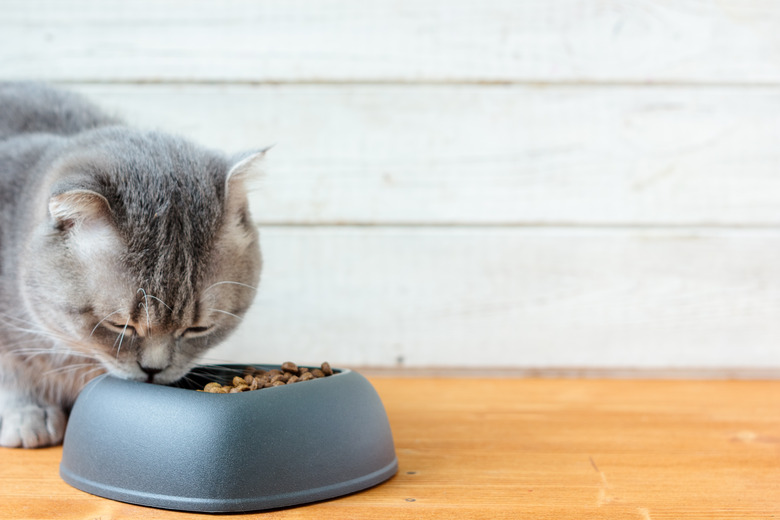Wet Versus Dry Cat Food: The Pros & Cons
While there are a lot of dietary formulations and brands of cat food, there are only a few options for feeding cats. They can get all dry cat food, all wet cat food, or a combination of the two. With a few healthy, homemade treats thrown in for good measure, of course!
There are pros and cons of both wet and dry cat food if you consider water and protein content, oral hygiene, cost, and portion control. When it comes to your cat, putting some thought into the advantages and disadvantages of food choices can help you manage your cat's overall health.
Feline dietary needs
Feline dietary needs
Feline nutrition does a lot to contribute to good general health over the life of your cat. Good quality pet foods are formulated to take into consideration the animal's nutritional needs so they get their needs met in each scoop. The Drake Center for Veterinary Care says that cats don't need carbohydrates. Instead, they have adapted to a diet rich in protein and fat.
In the wild, cats eat meat, but they do consume some plants and grass for digestive regulation and dental support—not, however, for calories or nutrition. Cats need an abundance of fresh, clean water. Lack of water deprives cells throughout the body of the fluid they need for overall function and health. Cats are adapted to getting the majority of the water they need through their food consumption.
Wet vs. dry cat food
Wet vs. dry cat food
Is wet cat food better than dry? It depends on how you look at it.
As the name suggests, wet cat food has a higher water content. The Drake Center for Veterinary Care says canned cat foods can contain up to 80% of the nutritional requirement of water per serving. Cats diagnosed with certain medical conditions might benefit from the higher water content in wet food. Urinary and kidney issues, or living in a hot environment, can mean that your cat would need even more water than usual.
Dry food helps to "scrub" a cat's teeth while they are eating it, which can help prevent gum disease. Dry food is less expensive and is easier to store. Dry cat food also has a higher percentage of carbohydrates because of the need to make it solid and stick together.
Canned food pros and cons
Canned food pros and cons
Canned cat food is a bit more expensive than dry cat food due to the packaging. But VCA Hospitals says what many people might already assume about the pros and cons of wet and dry cat food: Wet food could be tastier to your cat. Canned cat food gives the cat a larger portion than the equivalent amount of dry cat food. One disadvantage, however, is that canned cat food can contribute to cat gum disease.
Maintaining a healthy weight
Maintaining a healthy weight
On the plus side, dry food is easiest to portion out, which can be helpful if you're trying to manage a cat's weight or make sure you know how many calories they are consuming each day. On the blog of Mud Bay pet foods, they say that feeding only canned or raw foods has been shown to help cats lose weight. A ratio of 50% wet food to 50% dry also works, they say, but feeding as little as 25% wet food helps with weight loss because wet foods are high in meat protein, low in carbohydrates, and less calorically dense than dry food.
Ideal animal proteins
Ideal animal proteins
Protein from animals is the primary component of feline nutrition. The Drake Center says the best proteins for cats are more easily digestible proteins which come from fish and chicken. A high quality, nutritionally sound cat food will provide minimally processed protein from fish, poultry, and meat that contains about 40% of the protein requirements per serving.
Consistent food preferences
Consistent food preferences
VCA Hospitals says that cats really don't appreciate variety in their diets. Since cats are resistant to change, once they get used to a food it can be hard to get them to eat anything different. For this reason, one option for feeding cats is to use a combination of dry and canned food each day.
Cats can get used to flavors and textures, so sometimes consistency is best. If your cat is open-minded, you can vary the flavors but keep the ratio of wet and dry food roughly the same each day. If you are consistently feeding a mixture of canned and dry food that is within the proper nutritional requirements, chances are good that they will always accept both.
Always check with your veterinarian before changing your pet's diet, medication, or physical activity routines. This information is not a substitute for a vet's opinion.


